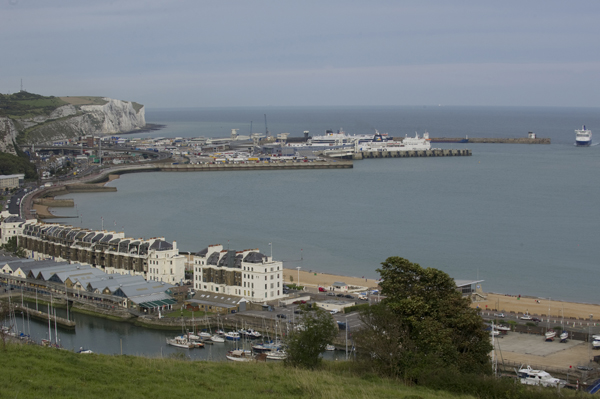World's busiest shipping route is first to deploy new technology to counter jammers and space weather
Ships in the Port of Dover, its approaches and part of the Dover Strait can now
use eLoran radio navigation technology as a backup to satnav systems like GPS
and Galileo.
The Dover area, the world’s
busiest shipping lane, is the first in the world to achieve this initial
operational capability (IOC) for shipping companies operating both passenger
and cargo services.
Today’s
announcement by the
General Lighthouse Authorities of the UK and Ireland (GLA) represents the first of up to seven eLoran installations to be
implemented along the East Coast of the United Kingdom.
The ground based eLoran system provides alternative position and
timing signals for improved navigational safety.
The Thames Estuary and
approaches up to Tilbury, the Humber Estuary and approaches, and the ports of
Middlesbrough, Grangemouth and Aberdeen will all have new
installations, and the prototype service at Harwich and Felixstowe will be
upgraded.
Although
primarily intended as a maritime aid to navigation, eLoran could become a cost
effective backup for a wide range of applications that are becoming
increasingly reliant on the position and timing information provided by satellite
systems.
Captain Ian
McNaught, Chief Executive of Trinity House, said: ‘Our
primary concern at the GLA is for the safety of mariners.
‘But signals from eLoran
transmitters could also provide essential backup to telecommunications, smart
grid and high frequency trading systems vulnerable to jamming by natural or
deliberate means.
‘We encourage ship owners and mariners to assess eLoran
in this region and provide feedback to the GLA on its performance.’
P&O Ferries has installed an eLoran receiver on its new vessel
‘Spirit of Britain’. She will be based at Dover and is one of the largest
passenger ships the busy Dover/Calais route has ever seen.
Captain Simon Richardson, head of safety management at P&O Ferries,
said: ‘Accurate real-time positional information is essential for the safe
navigation of ships with modern electronic charts. Satellite navigation systems
are vulnerable to degradation of signal strength and our ships have also
experienced occasional loss of signal.
‘We welcome the development of a robust
alternative to provide redundancy in real-time positional information and we
see eLoran as the most effective solution to countering the problem.’
Stephen
Hammond, Minister for Shipping said: ‘I congratulate the General Lighthouse
Authorities on this initiative which seeks to improve navigational safety in
what is the busiest shipping channel in the world, through the development and
deployment of technology.
‘I look forward to receiving reports of its
effectiveness.’




